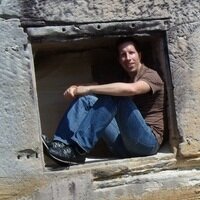gopura
sk गोपुर gopura, "elaborate gateway" |
Gopura in Indian architecture refers to a tower above a gateway or archway, "towers at the entrances of a temple". The term is also used as saṃdoha, a "meeting place" of the Yoginis.
by Till F. Sonnemann
A temple within the temple? Explorations in the Gopura (Gateway Tower) 4 West area of Angkor Wat might show a more ancient, buried structure.

pdf 3.3 MB
Led from December 2009 to February 2010, this research dealt on one of the most intriguing areas within the Angkor Wat precinct, the western gopura gateway.
Commenting on previous work around G4W by H. Parmentier (1919), H. Marchal (1920), J. Boisselier (1951) and B.P. Groslier (1966‒68) which revealed several masonry structures (some of them are still in place, while two stupas have been removed), the author states that “the construction history of Angkor supports the proposition that this was a temple structure which consisted of nine towers. The two mapped outer towers in the east of G4W were then matched by two in the west, located in the position of the northern and southern tower of G4W, and removed with its construction. The two western-most towers may have actually been further west than the symmetrical configuration suggests. This would be consistent with masonry remains observed in the GPR survey west of the gallery.
“The hypothetical remains of a central tower would now be buried under the central causeway. However, no evidence for its remains was detected by GPR alongside the masonry causeway, raising the question of the existence of a tower in the first place. a GPR survey on top of the causeway was not expected to show any interpretable results concerning subsurface features due to its height and structure.
“Another unique characteristic of the temple complex near G4W is the equal surface height of the bases of the towers. all known examples of the quincunx configuration at angkor are pyramidal, with the central tower placed higher than the surrounding four, and the inner quincunx configuration higher than the outer towers, as in the case of the east mebon. The configuration at G4W appears to be entirely flat with all the tower bases at the same level.”
GPR findings and their interpretation.
Tags: Angkor Wat, GPR, gopura, archaeology

Till F. Sonnemann is an archaeologist, geophysician and researcher with the Otto-Friedrich University Bamberg, Institut für Archäologie, Denkmalkunde und Kunstgeschichte, Germany.
An alumnus of University of Münster, University of Sydney, and Universiteit Leiden, his PhD thesis was: Angkor Underground — Applying GPR to analyse the diachronic structure of a great urban complex. He pursues his research in GPR (Ground Penetrating Radar) and RSD (Remote Sensing Data) applications.